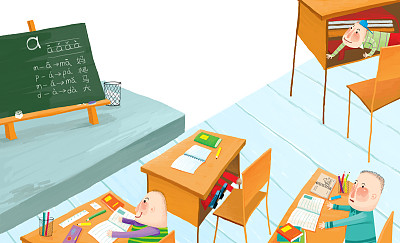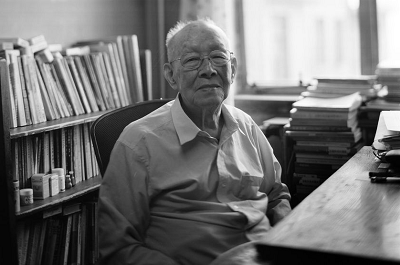
This is People’s Daily Tonight, your news source from China.
60 years of pinyin: Bringing Chinese language from intellectuals to the world
You can now officially say jiaozi rather than dumplings, and hukou rather than household registration system in English.

Illustration of kids learning pinyin. (Photo: VCG)
No longer in italics or with explanations, the two words have been included in the latest version of the Oxford English Dictionary.
They are written in pinyin, a Chinese phonetic alphabet that was introduced 60 years ago. Thanks to pinyin, Chinese words have been increasingly integrated into Western culture.
Being dubbed as "one of the greatest inventions in China in 20th century," pinyin has changed from its original purpose of being a tool for eliminating illiteracy to a promoter of Chinese language and a window into Chinese culture in the international arena.
The introduction of pinyin system was not a hasty decision. Back in the 1950s, in the early years after the founding of People’s Republic of China, the national illiteracy rate reached 80 percent. To eliminate illiteracy and promote elementary education, pinyin was created together with simplifying Chinese characters and promoting a standard version of Mandarin across the country.
Since then pinyin has been integrated into first-graders' textbooks and become the content of the first Chinese classes for hundreds of millions of Chinese students.
Sixty years later, China's illiteracy rate has dropped to 4.08 percent, and the popularization rate of standard Mandarin (or putonghua) has surpassed 70 percent. The proportion of the literate population using standardized Chinese characters exceeds 95 percent, all in part due to the pinyin system.

The father of Chinese pinyin Zhou Youguang (Photo: caixin.com)
Chinese pinyin has expanded from education to industrial and commercial fields. Late linguist Zhou Youguang, who had participated in the creation of pinyin system, once remarked, "Previously it was a literacy tool primarily used in primary schools, but now it's widely regarded as a medium for information transmission and a bridge connecting Chinese culture and others.”
Nowadays, pinyin is spreading quickly across the world and has become a necessity for teaching Chinese as a second language worldwide.
Unlike Latin or Germanic languages, Chinese characters use a pictographic writing system, making it hard for non-native speakers to pronounce or decode. In this sense, pinyin has become a starting point for foreigners to learn Chinese language.
Compared with the thousand-year-old Chinese scripts and characters, the 60 years of history of pinyin should not be used to dismiss its impact since it has yielded rich fruits.
Thanks to pinyin, Chinese characters have gone beyond intellectuals to ordinary Chinese people, and gone beyond China to the rest of the world.
(Produced by Chi Jingyi)


